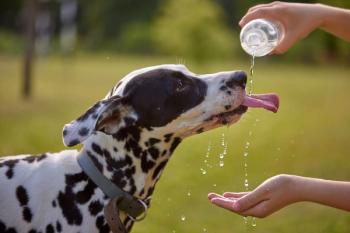
Fighting greenhouse gas emissions with cattle genetics
The use of technologies to increase food production and understand the implications of gene editing are being explored
Beef and dairy production significantly contribute to global greenhouse gas (GHG) emissions in varying amounts depending on the country. GHG emissions intensity is calculated using the emissions produced per unit of product such as beef or milk. It directly correlates to a country’s income status. The lower the income, the greater the intensity, which is concerning given that low- and middle-income countries (LMIC) own 76% of global cattle and contribute 75% of the global ruminant GHG emissions. Optimizing production efficacy in LMICs with the highest intensities—India, Brazil, Pakistan, and African nations, to name a few—can reduce global livestock emissions by 60% to 65% by 2050.
Genetic improvement is a potential strategy to accomplish this goal. A recent review in the American Society of Animal Science explored the current use of genetic improvement technologies to:
- increase milk and beef production efficacy
- expand its use into LMIC
- explore future implications of gene editing, and
- summarize the opportunity cost of delay in implementing genetic technologies into livestock production.
Current technologies used in cattle production include genetic selection, artificial insemination (AI), and sexed semen. Genetic selection uses genotyping to identify cows with the best genetic traits, like high milk yield. AI is a reproductive technology that uses genetic selection to breed cattle with sperm from genetically superior bulls, ensuring high-quality calves. The AI process has become increasingly beneficial with the introduction of sexed semen. Using X-chromosome-bearing semen to perform AI increases the number of female calves while reducing unwanted males.
AI increases livestock production efficiency but has been adopted inconsistently and unequally across beef and dairy industries. The beef industry uses genetic selection and AI more frequently to produce higher quality beef; however, 45% of beef comes from dairy production systems globally. Since beef produced in specialized beef herds generates 4 times the emissions as intensity of beef from dairy farms, there is potential to combine these sectors. Crossbreeding cattle using semen from genetically superior beef breeds to AI dairy cows can create “beef on dairy” calves tailored for beef production and have environmental and economic advantages.
The future of genetic technology is genetic engineering (GE) and gene editing (GnEd). These emerging technologies can create intentional genomic alterations (IGA) in the cattle genome to produce favorable phenotypes such as disease resistance, hornless, heat tolerance, and single-sex offspring. GnEd knocks out or introduces specific genes through nuclease-mediated changes to DNA. Incorporating this into current practice requires standard regulations, appropriate infrastructure, and positive public perception.
Genetic technologies have played a crucial role in lowering GHG emissions in the cattle industry. Delaying implementation in LMIC and future advancements of GnEd due to regulatory burdens and public pushback would forgo advantages of beneficial technologies, reduced GHG emissions, and environmental protection.
Miranda Morman, BS, is a 2025 PharmD Candidate studying veterinary pharmacy at the University of Connecticut School of Pharmacy in Storrs.
Reference
Van Eenennaam AL. Current and future uses of genetic improvement technologies in livestock breeding programs. Anim Front. 2025;15(1):80-90. doi:10.1093/af/vfae042
Newsletter
From exam room tips to practice management insights, get trusted veterinary news delivered straight to your inbox—subscribe to dvm360.






